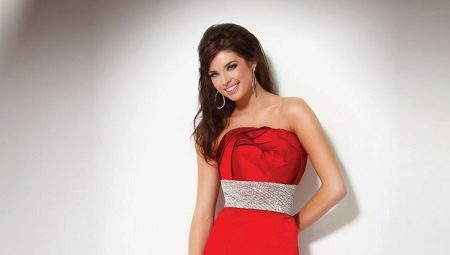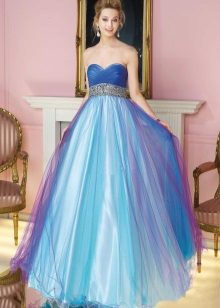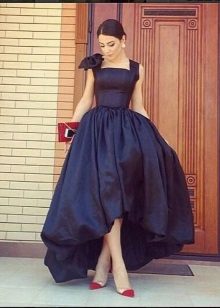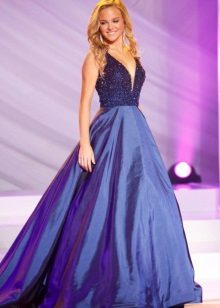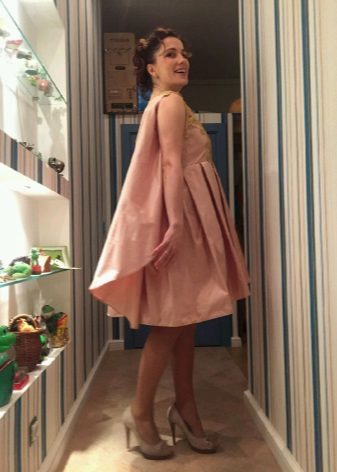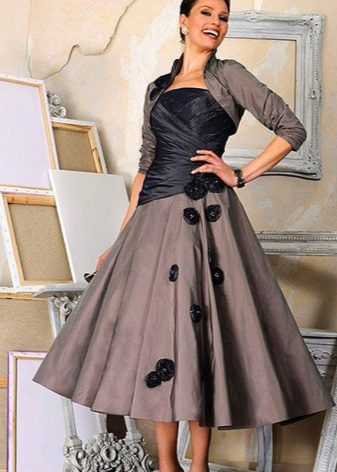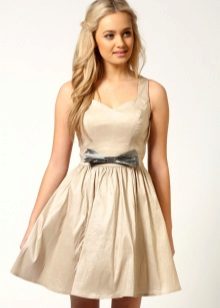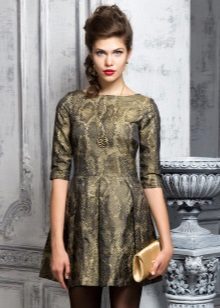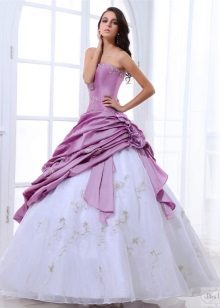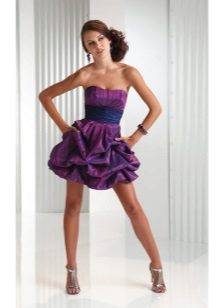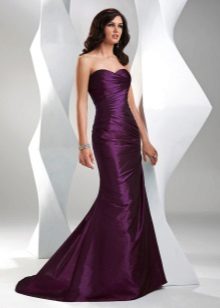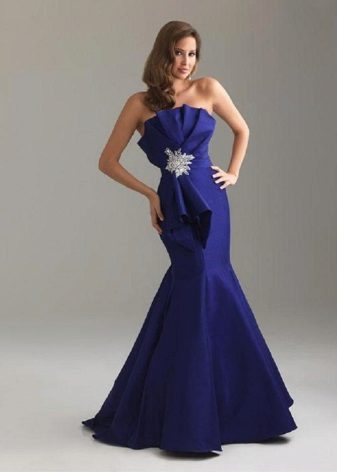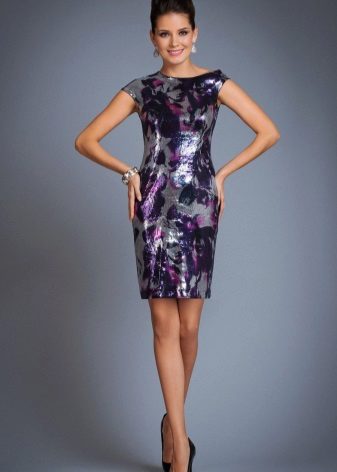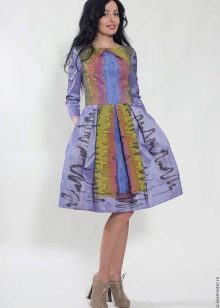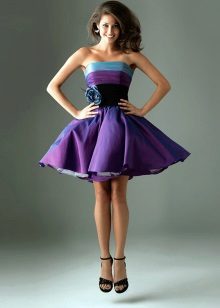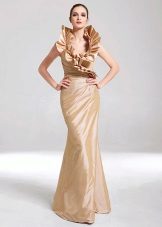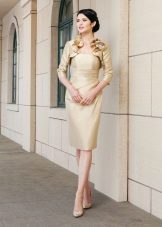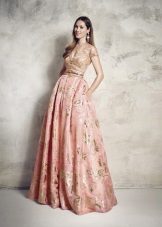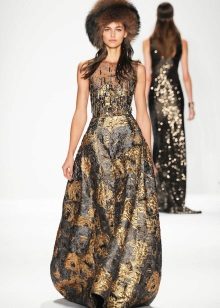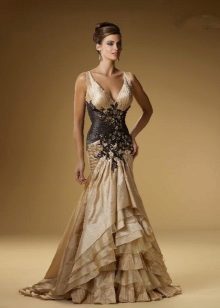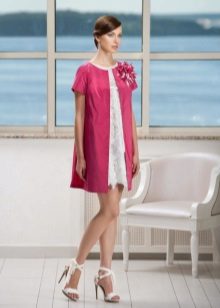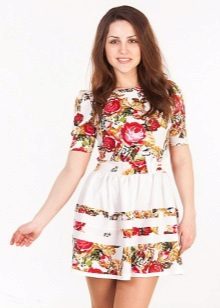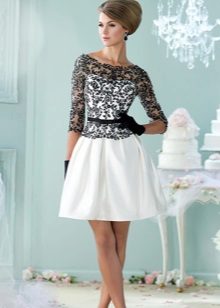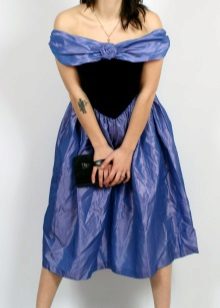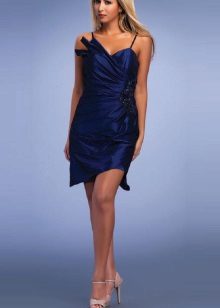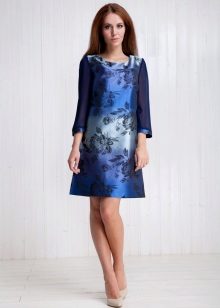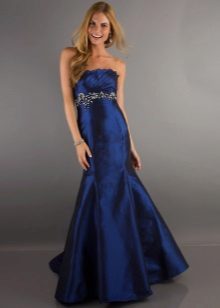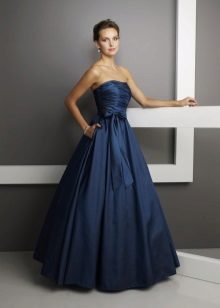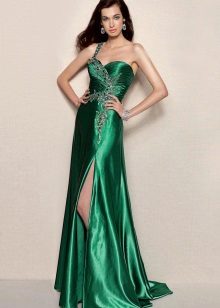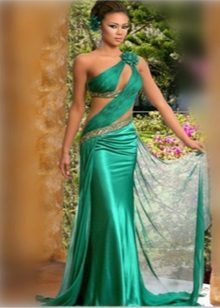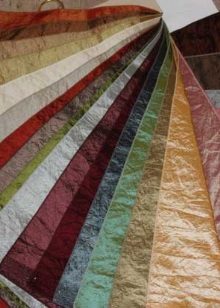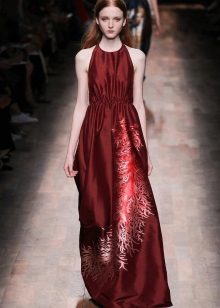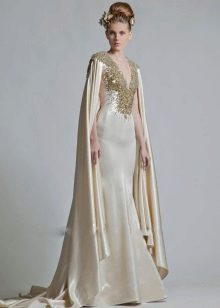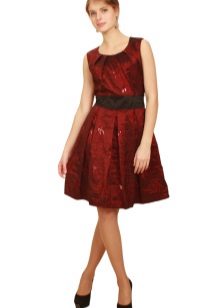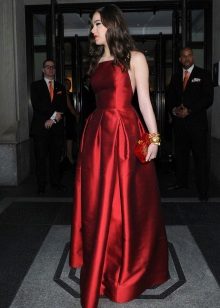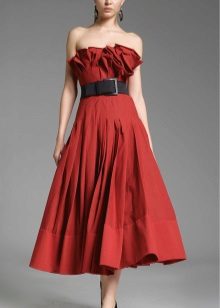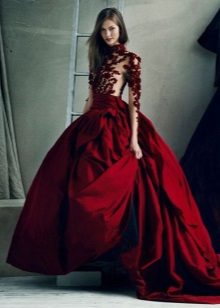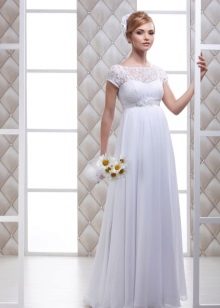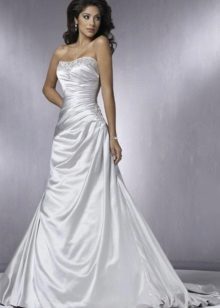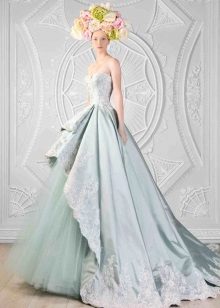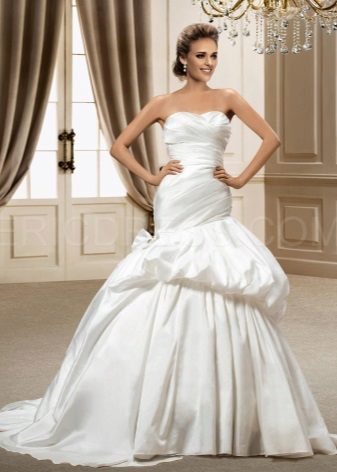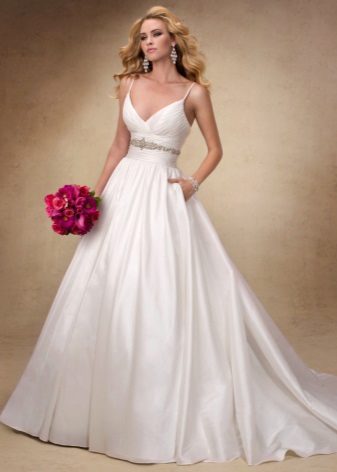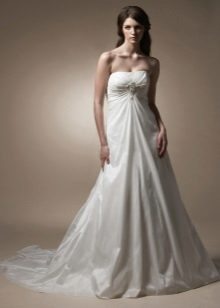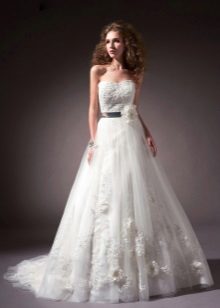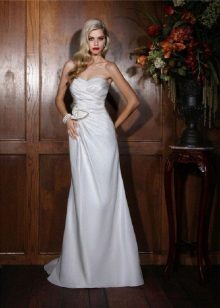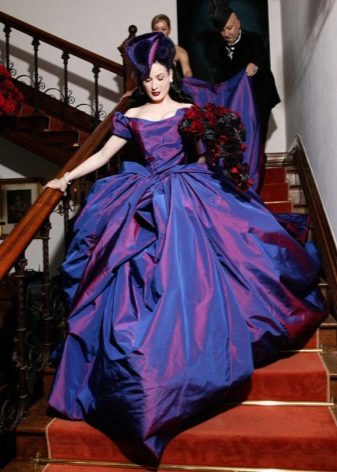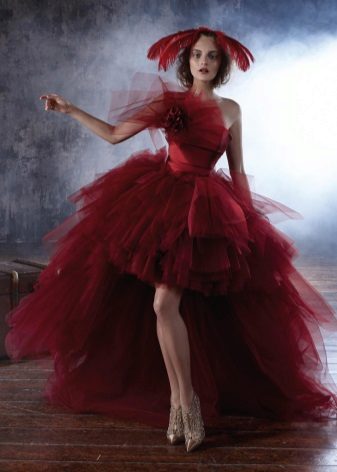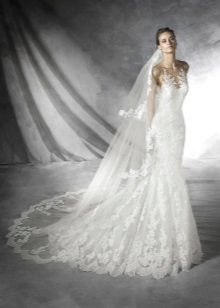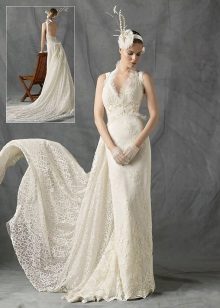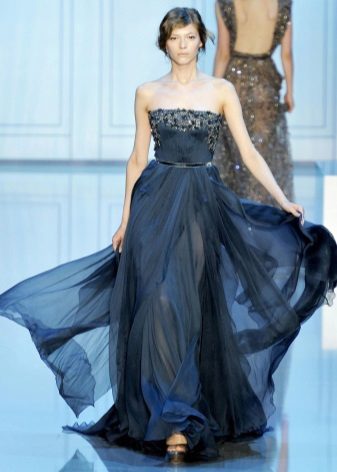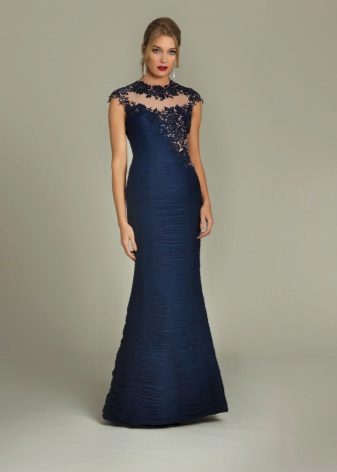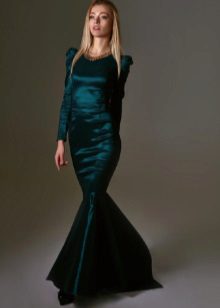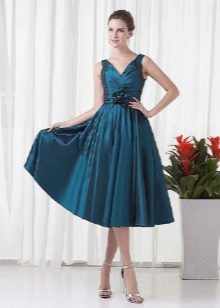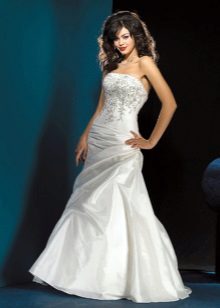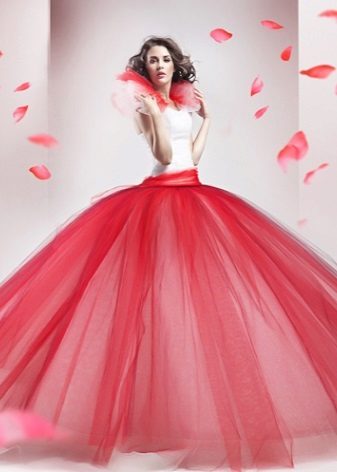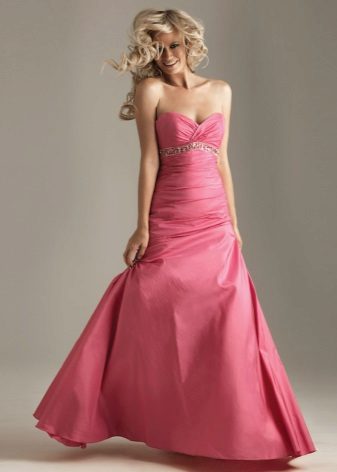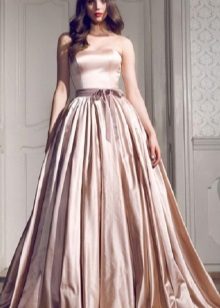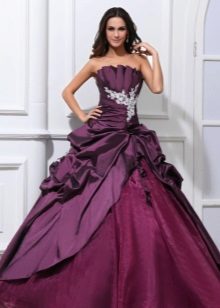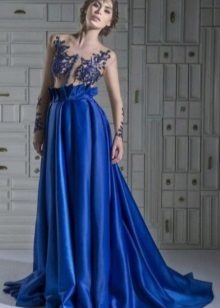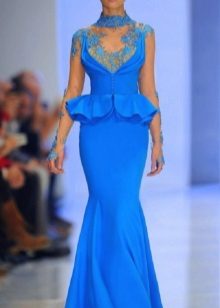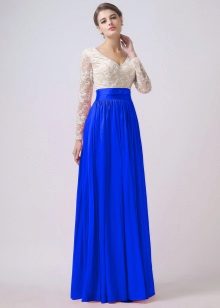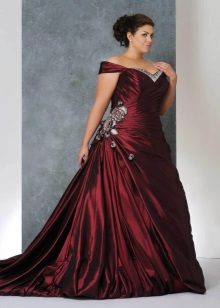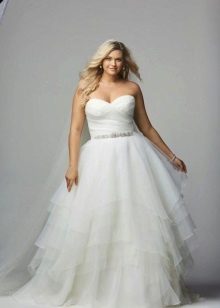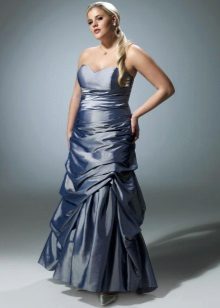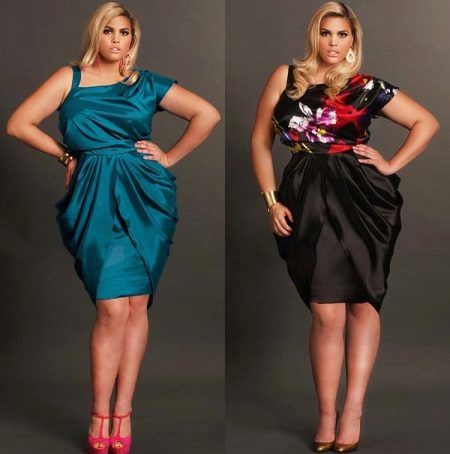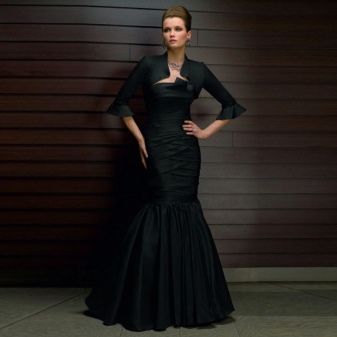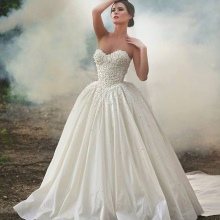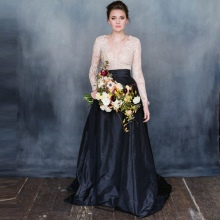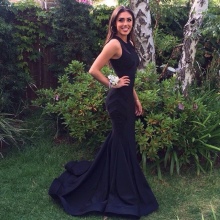Taffeta is a very peculiar material that is often used in the tailoring of evening dresses, because it is distinguished by luxury, wealth and takes us to the times of the Middle Ages. The peculiarity of this fabric is that it consists of tightly twisted threads. The canvas is characterized by density, but it remains very thin and light. The land of taffeta is Persia. This word translates as "woven."
Pros and cons of taffeta
The characteristics of taffeta depend on the raw materials used in the manufacture of this material. Today there are many varieties of this fabric, which differ in color and texture, as well as are based on different source materials. But all variants of taffeta have common advantages and disadvantages.
Pros:
- The density of weaving badly knocks water, so this material is characterized by excellent water-repellent properties.
- The wear resistance of taffeta lies in the fact that it has high strength.
- With proper care, a dress made of taffeta will retain its original appearance for a long time.
- This material is often used in the tailoring of evening dresses, because it stands out for its beauty, has an amazing glossy shine. Taffeta amenable to drapery, while the folds do not flow, and perfectly keep their shape. Thus, the dress perfectly keeps its shape.
Minuses:
- When cutting this fabric is often showered.
- At high temperatures, the wash may shrink.
- The material requires delicate care, because the dress may form creases or folds, which will be difficult to get rid of. Even ironing does not help to solve this problem.
Kinds
Taffeta has many varieties. Each classification is based on a certain criterion.
Depending on the material used, taffeta is:
- silk - only natural silk is used in production. This fabric is very expensive, but it is characterized by environmental friendliness, hygroscopicity, hypoallergenic and endurance;
- cotton - made from natural cotton. This material has properties such as airtightness, hypoallergenicity, environmental friendliness and hygroscopicity;
- viscose - based on artificial viscose. This fabric is more affordable, but has less wear resistance, especially when wet. She has a shimmering shine, very pleasant for the body. It is often used in the tailoring of summer dresses;
- acetate / polyester - made from polyester. Fabric differs in density and smoothness, and also possesses elegant gloss. This material is often used when sewing evening gowns that rustle quietly when moving.
Depending on the color palette, taffeta can be:
- monochromatic - threads of the same color are used;
- Shanzhan - a combination of different colors. The variety of combinations is amazing and surprising. The fabric is poured in different shades depending on the lighting and angles of view. A dress of even a simple cut from this material will look luxurious and beautiful.
Depending on the types of yarns, taffeta can be:
- reaped - produced by the use of a special press and only when exposed to temperature. It is not intended for ironing;
- smooth;
- stuffed.
Composition
Taffeta is a very interesting fabric, because its composition can be very different. There are fabric options when only natural fabrics are used. Often it combines synthetic fibers.
Wedding
Very often brides choose wedding dresses from taffeta, because such an outfit looks romantic, luxurious, feminine. This fabric can be used as the main material or only in the tailoring of petticoats.
For ceremonial events, including weddings, polyester or viscose taffeta is often used. The main advantage of this fabric is versatility, because taffeta is suitable for creating a wedding dress for summer and winter. When sewing a wedding dress, designers prefer tapestry, viscose or polyester taffeta.
A taffeta wedding dress can be presented in a classic or avant-garde style.
The main thing is that the style would fit the bride, emphasize her dignity, and hide the figure's flaws.
Evening
Taffeta is a thin fabric with a special glossy overflow, but it is durable and ductile, therefore it is an excellent choice for sewing an evening dress. Taffeta can be thin or dense. If you need to maintain the shape of the dress, then you should choose a dense taffeta.
From the taffeta, you can create a stunning and spectacular fluffy dress, evening dress of direct cut with Basque or American armhole. The volume decor will give the dress majesty and sophistication.
Styles
> Lush
The A-line taffeta dress has a fluffy skirt, therefore it suits all girls regardless of the type of figure. In this outfit, every girl will look slim and attractive.
A successful dress design creates an hourglass silhouette that hides the flaws of the hips or legs. To create the effect of lightness and lightness, you need to add a little translucent organza when decorating a dress.
> Dressy
Designers prefer to use embroidery, painting or lace for decorating taffeta outfits. An elegant dress can be presented in any style, because this material looks great, has a charming shine. Taffeta is a very popular fabric when sewing elegant dresses for various festive events.
> For full
Girls with magnificent forms can decorate your image with a dress made of taffeta. The most popular style is the model in the Empire style. This outfit has a high waist, which is placed under the breast. This model is universal, and also attracts the attention of others to the neckline. This outfit will hide a small tummy or full thighs. A dress in the Empire style is ideal for a woman with a pear-shaped figure, and also looks great on girls of short stature.
Full girls should not choose only long dresses, because a short outfit with basque will also give an image of femininity. To hide full hands you need to choose dresses with lace sleeves. The fluffy dress of short length allows you to veil wide hips and create proportionality of the figure.
Care
- Taffeta requires careful care, so preference should be given to hand-washing, although machine washing is allowed in a delicate mode, and the water temperature should be 30 degrees.
- For washing it is worth choosing liquid means, but not powder.
- The use of aggressive detergents should be avoided.
- It is strictly forbidden to use the spin of the washing machine.
- You can only press the fabric manually, but do not squeeze or twist the product. You need to wrap it in a towel so that all the water is absorbed into it, and leave it in a horizontal position until completely dry. Also it is necessary to cover the product with a dry cloth.
- If it is necessary to dry a dress or a taffeta skirt, then you can hang the product carefully by the hangers.
- It is strictly forbidden to dry taffeta products near heaters.
- The material can be ironed, but only from the wrong side or through an extra cotton fabric, and at the smallest temperature.
- To store clothes from taffeta need to use hangers and covers. Curtains or bedspreads made from this material should be neatly folded.It is strictly forbidden to store products in sealed bags without air.
